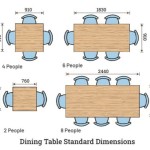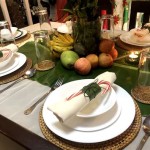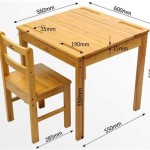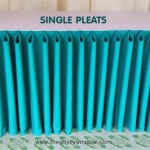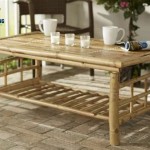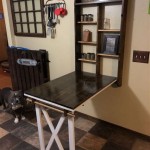Outdoor Wooden Picnic Tables: Durability, Style, and Functionality
Outdoor wooden picnic tables provide a versatile and durable seating solution for a variety of settings, ranging from private gardens and patios to public parks and campgrounds. The inherent aesthetic appeal of wood, coupled with its long-lasting nature when properly treated, makes these tables a popular choice for outdoor dining and recreation. Understanding the different types of wood used, construction methods, maintenance requirements, and design considerations is crucial for making an informed purchasing decision. This article explores these aspects in detail, providing a comprehensive overview of outdoor wooden picnic tables.
Wood Types and Their Properties
The selection of wood plays a significant role in the overall performance and longevity of an outdoor picnic table. Different wood species possess varying degrees of resistance to moisture, insects, and decay, influencing their suitability for outdoor use. The following are some of the most common wood types used in the construction of outdoor wooden picnic tables:
Cedar: Cedar is a naturally durable wood known for its resistance to rot and insect infestation. Its aromatic oils act as a natural preservative, making it an excellent choice for outdoor furniture. Cedar also exhibits minimal shrinkage and swelling, reducing the likelihood of warping or cracking. Its reddish-brown color provides a warm, inviting aesthetic. Western Red Cedar and Eastern White Cedar are two common species used in picnic table construction. While relatively lightweight and easy to work with, cedar can be more expensive than some other wood options.
Pine: Pine is a readily available and relatively inexpensive softwood. However, untreated pine is susceptible to rot, insects, and decay when exposed to the elements. Therefore, pine used in outdoor picnic tables typically requires pressure treatment with chemical preservatives to enhance its durability. Pressure-treated pine is resistant to decay and insect damage but may leach chemicals into the surrounding environment. Additionally, pressure-treated pine can have a greenish tint, which may not be aesthetically pleasing to all consumers. Regular sealing and staining are necessary to maintain its appearance and protect it from the elements.
Redwood: Redwood, like cedar, is a naturally durable wood with inherent resistance to rot and insects. Its reddish-brown color is highly desirable, and it is known for its dimensional stability, meaning it is less likely to warp or crack than some other wood species. Redwood is also relatively lightweight and easy to work with. However, redwood is becoming increasingly scarce and expensive due to environmental concerns and harvesting restrictions. Sustainable redwood options are available but may come at a premium price.
Teak: Teak is a hardwood renowned for its exceptional durability and resistance to decay, insects, and moisture. It is naturally oily, which provides protection from the elements and prevents it from becoming brittle. Teak is also known for its beautiful golden-brown color, which weathers to a silvery-gray patina over time. Teak is highly desirable for outdoor furniture but is also one of the most expensive wood options. Proper sourcing is crucial to ensure that the teak is harvested sustainably.
Cypress: Cypress is a durable wood with natural resistance to rot and insects. It is relatively lightweight and easy to work with, making it a good choice for outdoor furniture. Cypress can range in color from light yellow to dark brown, depending on the species and growing conditions. It accepts paints and stains well, allowing for customization. Cypress is a more sustainable alternative to some other durable wood options, but its availability may vary depending on location.
Construction Methods and Design Considerations
The construction methods employed in building a wooden picnic table significantly impact its stability, durability, and overall lifespan. Key construction elements include the frame, tabletop, seating, and hardware used.
Framing: A robust frame is essential for providing structural support to the tabletop and seating. Frames are typically constructed from thicker lumber, often using mortise and tenon joints, lap joints, or metal fasteners like screws and bolts for secure connections. The frame design should distribute weight evenly to prevent sagging or tipping. Cross bracing is often incorporated to further enhance stability, especially for larger tables.
Tabletop: The tabletop is the primary surface for dining and other activities. Tabletop planks should be securely fastened to the frame to prevent movement or separation. Spacing between planks allows for water drainage and prevents warping due to moisture expansion. The tabletop surface should be smooth and free of splinters to ensure user comfort and safety. Consider the size and shape of the tabletop to accommodate the intended number of users. Rectangular tables are common, but round or oval tables can offer a more intimate seating arrangement.
Seating: Picnic table seating typically consists of attached benches or separate chairs. Attached benches provide a traditional picnic table aesthetic and offer space-saving convenience. However, attached benches can limit accessibility for individuals with mobility issues. Separate chairs offer greater flexibility and comfort and can be easily rearranged to accommodate different seating needs. The height and depth of the seating should be ergonomically designed for comfortable seating. Consider the weight capacity of the seating to ensure it can safely support users.
Hardware: The quality of the hardware used in constructing a wooden picnic table is crucial for its long-term performance. Stainless steel or galvanized steel hardware is recommended for outdoor use to prevent rust and corrosion. Screws and bolts should be properly sized and tightened to ensure secure connections. Countersinking screw heads prevents them from snagging clothing or causing injuries. Consider using tamper-resistant hardware in public spaces to deter vandalism.
Design Considerations:Beyond the basic structural elements, several design considerations can enhance the functionality and aesthetic appeal of a wooden picnic table. These include:
- Size and shape: Consider the available space and the number of users when selecting the size and shape of the table.
- Accessibility: Ensure the table is accessible to individuals with mobility issues by providing adequate clearance around the seating.
- Finish: Apply a weather-resistant finish to protect the wood from the elements and enhance its aesthetic appeal.
- Style: Choose a style that complements the surrounding environment, whether it is rustic, modern, or traditional.
- Portability: Consider a foldable or collapsible design for easy storage and transportation.
- Additional features: Explore additional features such as umbrella holes, cup holders, or built-in storage.
Maintenance and Care
Proper maintenance and care are essential for extending the lifespan of an outdoor wooden picnic table. Regular cleaning, sealing, and repair can prevent damage from the elements, insects, and wear and tear.
Cleaning: The table should be cleaned regularly to remove dirt, debris, and mildew. Use a mild soap and water solution and a soft brush or cloth to clean the surface. Avoid using harsh chemicals or abrasive cleaners, as they can damage the wood finish. Rinse the table thoroughly with clean water and allow it to dry completely before applying a sealant.
Sealing: Applying a sealant or stain to the wood provides a protective barrier against moisture, UV rays, and insects. The type of sealant or stain will depend on the type of wood and the desired aesthetic. Oil-based sealants provide excellent water resistance but may require more frequent reapplication. Water-based sealants are more environmentally friendly but may not be as durable. Follow the manufacturer's instructions for application and reapplication. A good practice is to apply a new coat of sealant every one to two years, or as needed.
Repair: Inspect the table regularly for signs of damage, such as cracks, splinters, or loose hardware. Repair any damage promptly to prevent it from worsening. Tighten loose screws or bolts, replace damaged planks, and fill cracks with wood filler. Sand down rough edges and splinters to prevent injuries. Ignoring minor repairs can lead to more significant problems over time, ultimately shortening the lifespan of the table.
Winter Storage: In regions with harsh winters, storing the picnic table indoors or covering it with a waterproof cover can help protect it from the elements. This is especially important for tables made from less durable wood species. Clean the table thoroughly before storing it to prevent mildew growth. Ensure that the storage area is dry and well-ventilated to prevent moisture damage.
Pest Control: Regularly inspect the table for signs of insect infestation, such as termites or carpenter ants. If infestation is detected, take appropriate measures to eliminate the pests. Consult with a professional pest control service for severe infestations. Applying a wood preservative can help prevent future infestations.
The selection of an outdoor wooden picnic table that meets the specific needs and aesthetic preferences of the buyer requires careful consideration of the wood type, construction methods, and maintenance requirements. By understanding these factors, individuals can make an informed decision and enjoy the benefits of a durable and attractive outdoor seating solution for years to come.

6 Heavy Duty Douglas Fir Picnic Table Singapore

Outdoor Timber Picnic Bench L1 2m

Outdoor Garden Park Timber Picnic Bbq Bench

Conventional Wooden Picnic Table Outdoor Timber Tables Tk

Commercial Picnic Tables By Billabong Outdoor Furniture

Outdoor Iconic Wooden Picnic Table Oztables

25 Diy Picnic Tables Best For Your Yard

Cedar Wood 32 Wide Classic Family Picnic Table Set

Outdoor Garden Park Timber Picnic Bbq Bench

H24 Outdoor Picnic Table With Bench Outerspace


